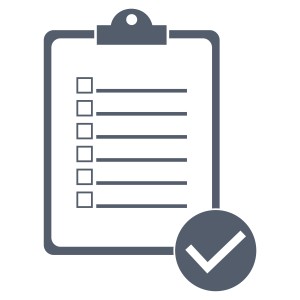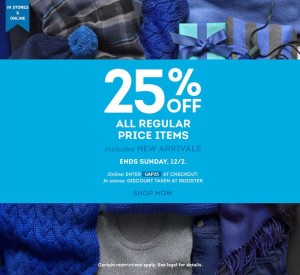Want to grow your business and are considering advertising to increase revenue? Great idea. The bad news is that the processes necessary are not always simple. Yet fear not! This post will break down the process into very manageable steps that you can utilize to evaluate the effectiveness of your advertising. Choosing effective advertising tracking and determining ROI can be a challenge in both online and offline stores. Advertising tracking ranges from technical methods to very simple methods. In many cases, several methods can be used together to create data sets that overlap and provide solid results that direct confident advertising buying decisions. In this post, we will review various advertising tracking options, identify software needs and advertising best practices.
Before we dive into tracking advertising, we must evaluate your purpose so that we can define the goals. Businesses advertise for several reasons with most common reasons including:
- Branding (awareness) – This goal defines a less immediate return with a focus on long-term gains. Applications such as TV, Radio and Billboard advertising align with branding goals.
- Lead Acquisition – This goal defines more actionable return that provides leads that can be nurtured and solicited for future revenue gains. Social media advertising, display advertising (banner ads) and search advertising align with lead acquisition goals.
- Sales (transaction) – While increasing revenue is the ultimate goal for almost all businesses, not all can make this the goal for all advertising due to the longer length of sales cycles. If your organization has capabilities of processing sales on your website, then this goal may be ideal for you. Digital advertising identified in lead acquisition goals also work well for sales goals.
IMPORTANT: If you cannot define your goals, then rest of this article will not be beneficial. I recommend solidifying your goals before doing any advertising. Otherwise, it is impossible to determine success or failure.
Ad Tracking Methods
So, now we evaluate the basic seven effective advertising tracking methods. The list below ranks in tracking methods in order of complexity (from easy to complex).
- Sales

Once you start advertising, most companies will either see sales go up or not. If it goes up, then advertising is effective. This tracking method is the most simple. For example: let’s say you start advertising your store or product in June. If you have a short sales cycle, you will see sales remain consistent, increase or decrease in June. If sales increase, you can assume a good advertising decision, If sales decline or stay consistent, you could assume a bad advertising decision. software is needed for this method. - Item Tracking/Lost Leader

With this method, a particular product or service will be promoted. If this product or service receives more customer interest once you start advertising, then you can anticipate the advertising method was successful. You can use software to evaluate effectiveness, but a simple ROI calculation will do.Sample Calculation: You promote XYZ product for a month in ABC publication for $400. Once the month is over, you evaluate volume of XYZ product sold compared to a previous, comparable timeframe (like the previous month). Assuming you had an increase of 30 products sold. The profit from each product sold is $50. You can calculate 30 x $50 = $1500.ROI (actual): 1500 – 400. ROI: $1,200 - Word Flag (Ideal for Offline Stores)

This historic method is one of my least favorites, but is still quite simple and can be effective. To use word flag, you would put a statement like “mention this ad” or “bring this ad into the store for a 10% discount” in our advertisement. If you get many responses from customers, then it could be determined the advertisement was effective. You can simply evaluate the effectiveness of the ad by volume of responses. There is no needed software, but you will need to figure out how you keep up with paper clippings or mentions to your staff. - Survey
 Surveys are a popular method of tracking that can vary on difficulty, depending on software and implementation. This method requires you ask where the customer heard about you. If you have an offline store, your sales person can ask and manually enter the response into your POS system. Or if you have an online store, you can add the field to your web form. Alternatively, you can send an email out after the sale in more of a traditional format asking your customers how they found out about your store or product. Note: this method can be unreliable as many times customers don’t know how they found out about you or they just select one of the first options.
Surveys are a popular method of tracking that can vary on difficulty, depending on software and implementation. This method requires you ask where the customer heard about you. If you have an offline store, your sales person can ask and manually enter the response into your POS system. Or if you have an online store, you can add the field to your web form. Alternatively, you can send an email out after the sale in more of a traditional format asking your customers how they found out about your store or product. Note: this method can be unreliable as many times customers don’t know how they found out about you or they just select one of the first options. - Coupon Code

Using coupons is one of my favorite methods to track advertising. The concept is simple, but the deployment and tracking is a bit more technical. This process is best explained with a scenario. In an advertisement in a print publication, you offer 10% off to anyone that uses the code “bananas”. In an email sent to a subscriber list of a publication, you offer the same 10% off to anyone that uses the code “apples”. Then, after a certain time period, you can evaluate if you received more coupon users with the code “bananas” vs “apples”. Once you determine which brings in the most sales, then you can be more confident continuing one advertising method (print or email) over the other. You will need special software for this tracking method, which usually is tied into your CMS, shopping cart or POS. - Phone Number Tracking (technical)
 Similar to coupon code tracking, you can utilize phone number tracking. This method will require specialized software as well – usually as plugins or standard offerings with your CMS, shopping cart or POS. With this method, you would have access to many phone numbers that all ring to your sales staff. Then, you would only use particular phone numbers for particular advertising mediums. See the scenario below. In a TV commercial, you make the statement “Call 800.555.1234”. During the same timeframe, you also have a billboard that displays “Call 800.555.4321”. Using the phone tracking software, you can determine which adverting method brings in more phone calls and allows you to continue or increase the amount of advertising in one source over another.
Similar to coupon code tracking, you can utilize phone number tracking. This method will require specialized software as well – usually as plugins or standard offerings with your CMS, shopping cart or POS. With this method, you would have access to many phone numbers that all ring to your sales staff. Then, you would only use particular phone numbers for particular advertising mediums. See the scenario below. In a TV commercial, you make the statement “Call 800.555.1234”. During the same timeframe, you also have a billboard that displays “Call 800.555.4321”. Using the phone tracking software, you can determine which adverting method brings in more phone calls and allows you to continue or increase the amount of advertising in one source over another. - URL query/vanity tracking and tagging (Ideal for online transactions)

Much like phone tracking, URL query or vanity tracking can provide evidence of sales origination in a digital medium.For example: Assume I have two digital ads. One ad on www.ABC.com and another on www.XYZ.com. I can have the link from the ad on www.ABC.com link with a customized URL similar to: www.ABC.com?utc=campaign1. Then, I can do the same thing from the other site, www.XYZ.com, with a customized URL similar to: www.ABC.com?utc=campaign2 . Then, we can use software to help evaluate what actions viewers took on my site based on which site they originated from – either www.ABC.com or www.XYZ.com. You can use Google Analytics to evaluate the data with this tracking method.
Tracking advertising is not always an exact science, but it can help you make better decisions to optimize your spend. There are many factors that come into play with data analysis that impact outcomes. Seasonality, uncontrollable external factors and data sampling size all contribute to the quality of the results. So, use this post as a guide to determine general effectiveness of your advertising. If you get to a point that you need more accurate results, you can always hire a professional.

Leave a Reply